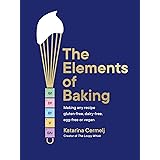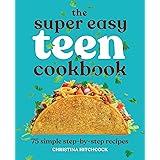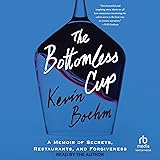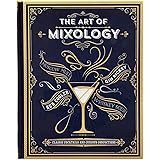Are you looking to achieve your fat loss goals without breaking the bank? The pursuit of a leaner physique often involves a significant focus on dietary protein, which can sometimes be perceived as expensive. However, as succinctly highlighted in the video above, there are numerous budget-friendly options available that can effectively support your weight management journey. This article will delve deeper into five of the most accessible and potent cheap high protein sources, expanding on their nutritional benefits and practical applications for sustainable fat loss.
The Undeniable Role of Protein in Fat Loss
Before exploring specific food items, it is important that the foundational role of protein in fat loss is understood. Protein is recognized as the most satiating macronutrient; consequently, feelings of fullness are promoted, which can lead to reduced overall calorie intake. Furthermore, a higher thermic effect of food (TEF) is observed with protein consumption, meaning more calories are expended during its digestion and metabolism compared to carbohydrates or fats. This metabolic boost is a significant advantage when a calorie deficit is being maintained.
Moreover, protein plays a critical role in preserving lean muscle mass, particularly during periods of caloric restriction. When body weight is lost, both fat and muscle tissue can be shed. Sufficient protein intake helps to signal the body to retain muscle, ensuring that a greater proportion of the weight lost is fat. This preservation of muscle is paramount, as muscle tissue is more metabolically active than fat, contributing to a higher resting metabolic rate. Therefore, the strategic inclusion of adequate protein is not merely about satiety but also about optimizing body composition.
Eggs: A Versatile and Economical Protein Powerhouse
Eggs are frequently praised as one of the most complete and affordable protein sources available. A single large egg, typically weighing around 50 grams, is known to contain approximately 6 grams of high-quality protein, which includes all nine essential amino acids. This makes eggs an excellent choice for muscle repair and growth, as well as for promoting satiety. The yolk, often misunderstood, is rich in vitamins D and B12, choline, and beneficial antioxidants, all of which contribute to overall health and well-being.
The versatility of eggs in meal preparation is virtually unmatched. They can be hard-boiled for a quick snack, scrambled for breakfast, incorporated into salads, or used as a binder in lean meatloaf recipes. Data suggests that individuals who consume eggs for breakfast often report greater satiety and consume fewer calories throughout the day compared to those who eat carbohydrate-heavy breakfasts. Consequently, eggs are an indispensable component of a fat loss diet, offering nutritional density at a minimal cost.
Chicken Breast: Lean, Clean, and Readily Available
Chicken breast consistently ranks high among dieters for its impressive protein-to-calorie ratio. A 100-gram serving of boneless, skinless chicken breast typically provides around 31 grams of protein for only about 165 calories, making it an exceptionally lean protein option. The absence of skin significantly reduces its fat content, thereby allowing for greater dietary flexibility within a calorie-controlled eating plan. This low-fat profile makes it an ideal choice for those aiming to reduce caloric intake while maximizing protein consumption.
Furthermore, chicken breast is remarkably adaptable to various culinary preparations, making it a staple in countless healthy recipes. It can be grilled, baked, pan-fried, or shredded for salads and sandwiches, ensuring mealtime variety and preventing dietary boredom. From a nutritional standpoint, chicken breast also supplies essential B vitamins, particularly niacin and B6, which are crucial for energy metabolism. Therefore, its inclusion is considered highly beneficial for anyone prioritizing effective protein for fat loss.
Whey Protein: A Convenient and Rapidly Absorbed Option
Whey protein, as a supplement, offers an incredibly convenient and concentrated source of protein that can be particularly useful for meeting daily protein targets. Derived from milk during the cheesemaking process, it is celebrated for its rapid digestion and absorption rate, making it an ideal choice for post-workout recovery when muscle repair is paramount. A typical serving, usually 25-30 grams of powder, can provide 20-25 grams of protein with minimal carbohydrates and fats.
Among the various types, whey isolate (such as ISOPEPT, as mentioned in the video) is often preferred due to its higher protein concentration and lower lactose content, which can be advantageous for individuals with dairy sensitivities. Studies have shown that supplementing with whey protein can enhance satiety, assist in muscle protein synthesis, and contribute to overall fat loss when integrated into a calorie-restricted diet. Consequently, it serves as an excellent tool for increasing protein intake efficiently, especially when whole food options are not immediately accessible.
Tuna: A Shelf-Stable Source of Omega-3s and Protein
Tuna, particularly canned tuna in water, represents another fantastic cheap high protein source that is both convenient and nutritionally dense. A 100-gram serving of canned light tuna provides approximately 25 grams of protein for about 116 calories. Its long shelf life makes it an excellent pantry staple for quick, protein-rich meals and snacks, eliminating the need for constant refrigeration before opening. This makes it an invaluable resource for meal prep and emergency sustenance.
Beyond its protein content, tuna is also a notable source of omega-3 fatty acids, specifically EPA and DHA. These essential fats are known for their anti-inflammatory properties and their role in cardiovascular health, which are crucial aspects of a holistic approach to health and fat loss. Tuna can be easily incorporated into salads, mixed with light mayonnaise or Greek yogurt for sandwiches, or flaked into pasta dishes. It is, therefore, a highly practical and beneficial addition to a diet focused on healthy eating and weight management.
Ground Turkey: A Lean Alternative to Other Meats
Ground turkey is frequently recommended as a leaner alternative to ground beef, offering a substantial amount of protein with often fewer calories and less saturated fat. The nutritional profile can vary depending on the fat percentage (e.g., 93% lean or 99% lean), but even 93% lean ground turkey provides approximately 20-22 grams of protein per 100-gram serving with a moderate amount of fat. Opting for 99% lean ground turkey significantly reduces the fat content, making it an even more affordable protein for fat loss.
Its mild flavor and versatile texture allow it to be seamlessly substituted into recipes that traditionally call for ground beef, such as chili, tacos, stir-fries, and burgers. This adaptability helps individuals adhere to their dietary goals without sacrificing flavor or culinary enjoyment. Ground turkey also contributes essential nutrients like B vitamins and selenium, supporting overall metabolic function. Therefore, it is considered an excellent choice for those seeking to maximize protein intake while managing their caloric budget effectively.
Integrating Cheap High Protein Sources for Sustainable Fat Loss
Successfully integrating these cheap high protein sources into your daily diet is a strategic move towards achieving sustainable fat loss. Emphasis should be placed on meal planning and preparation, which can further optimize both cost-effectiveness and adherence. Batch cooking chicken breast, hard-boiling a dozen eggs for the week, or keeping canned tuna readily available ensures that protein-rich options are always within reach. The benefits of consistent protein intake include enhanced satiety, preservation of lean muscle mass, and a slightly elevated metabolic rate, all of which are instrumental in facilitating a calorie deficit. By prioritizing these affordable and nutrient-dense options, individuals are empowered to reach their fat loss objectives without compromising their financial stability or nutritional quality. The consistent application of these principles ensures that a healthy and balanced diet is maintained, supporting long-term health and well-being.











